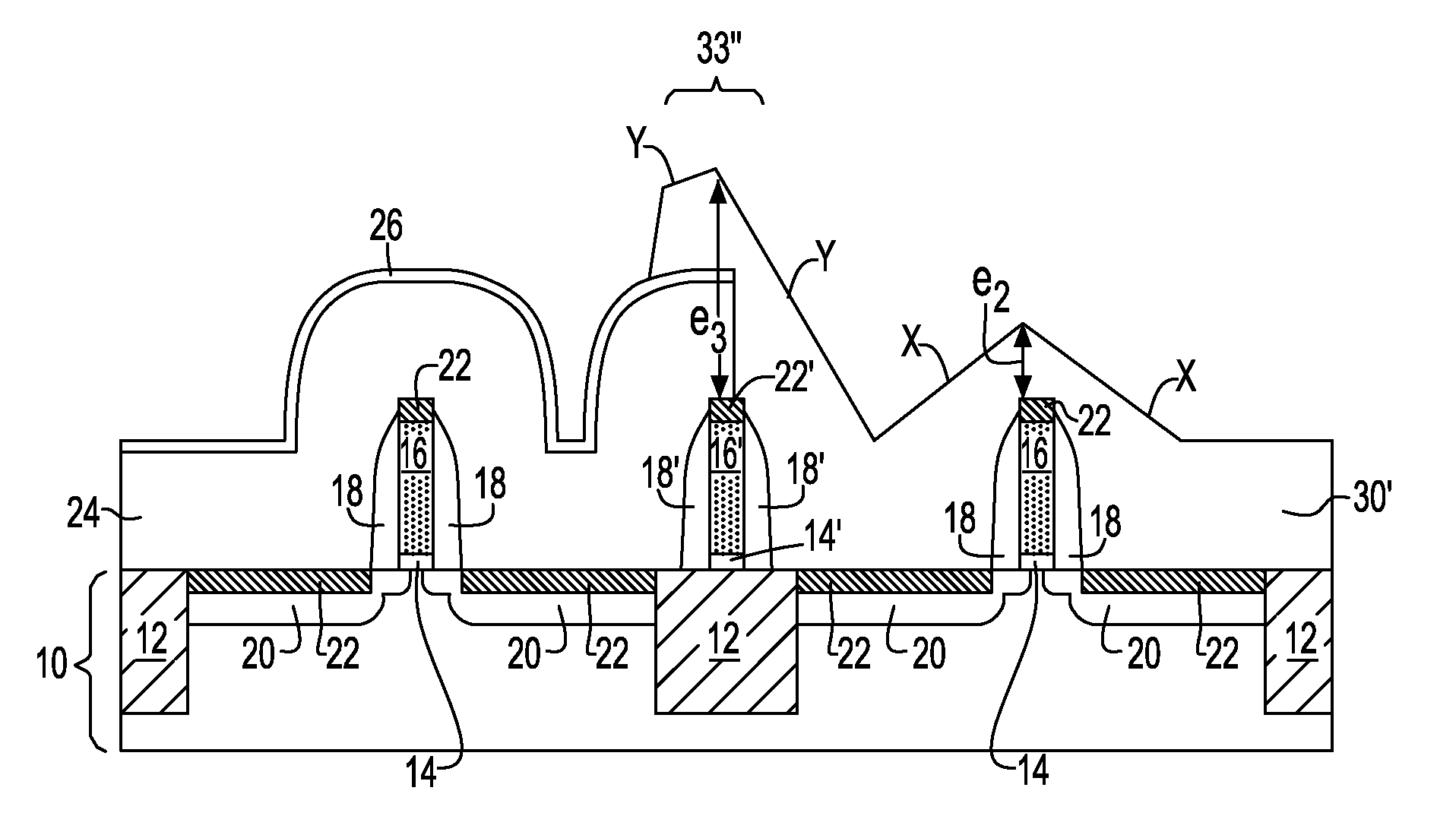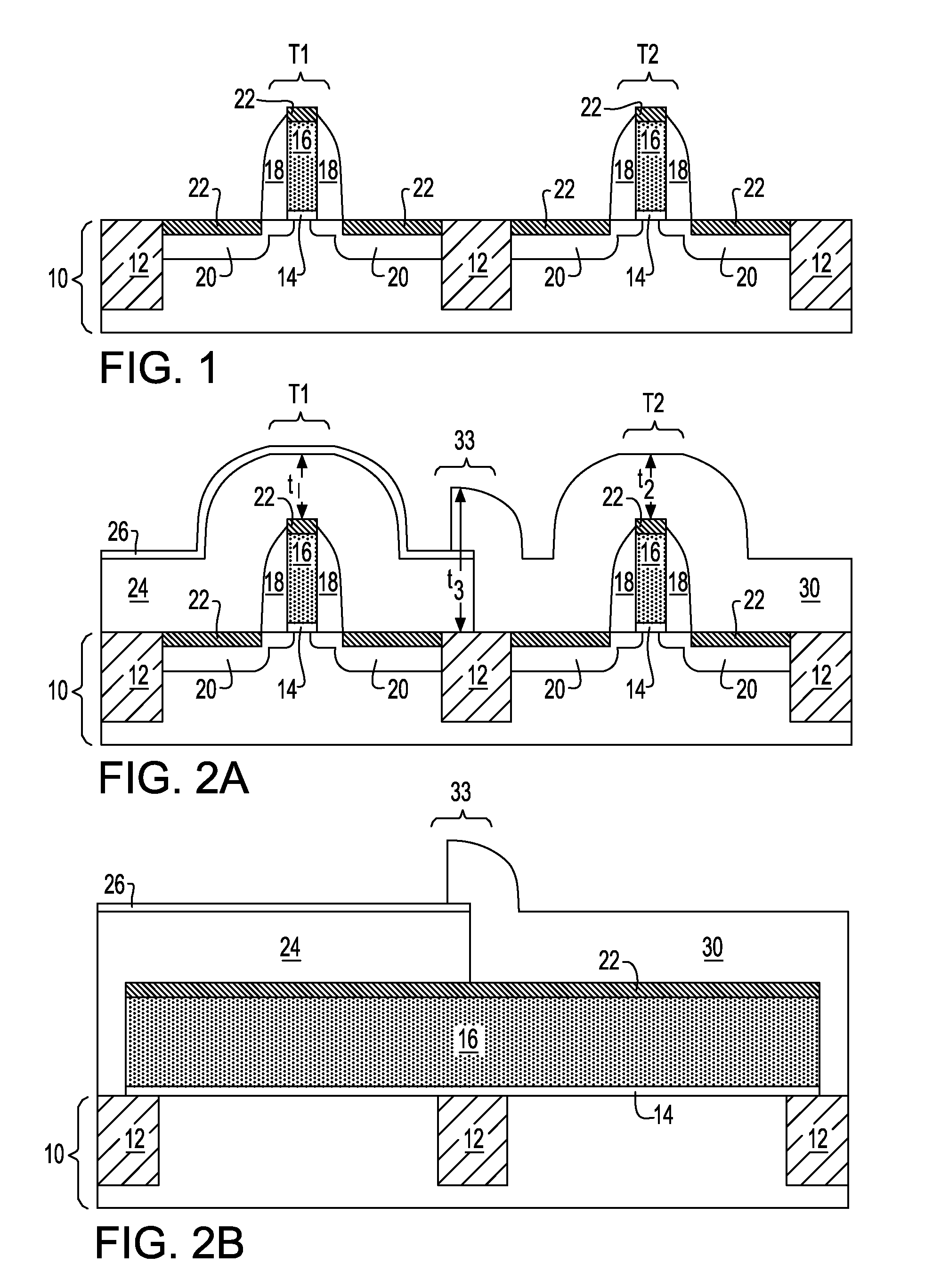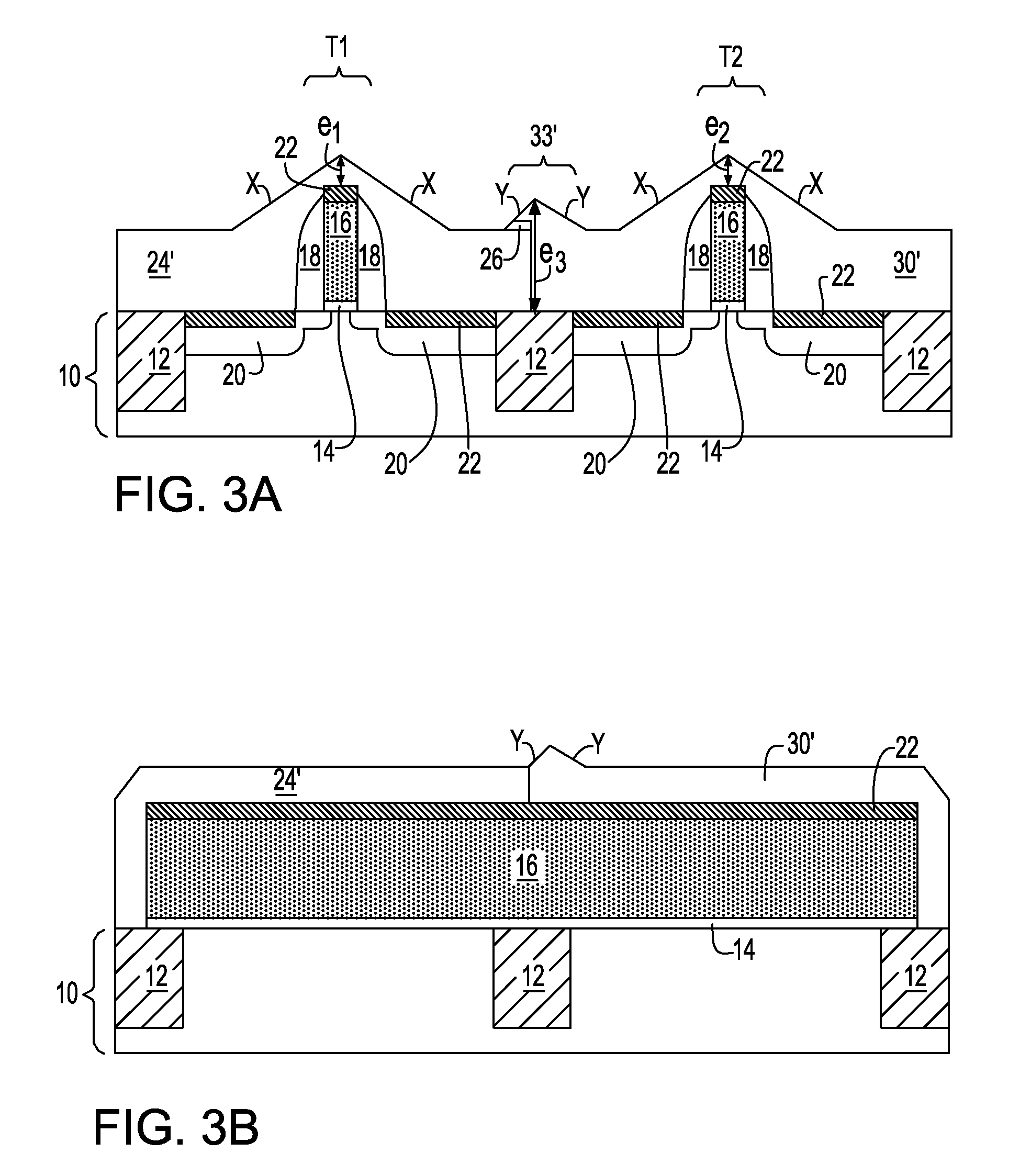CMOS structures and methods for improving yield
a technology of cmos and structures, applied in the field of cmos structures and methods for improving yield, can solve the problems of becoming even more difficult to etch contact holes, and difficult to deal with dsl boundaries, so as to improve the yield of cmos devices, improve the yield of chips, and improve the effect of efficiency and economics
- Summary
- Abstract
- Description
- Claims
- Application Information
AI Technical Summary
Benefits of technology
Problems solved by technology
Method used
Image
Examples
first embodiment
[0049]Reference is first made to FIGS. 1-4B which are pictorial representations through various cross sectional views illustrating basic processing steps of the present invention.
[0050]Specifically, FIG. 1 shows a semiconductor substrate 10 that comprises active regions separated by an isolation region 12. A first transistor T1 is located upon one active region and a second transistor T2 is located upon an adjacent active region. Transistors T1 and T2 are of different polarity (i.e., conductivity type) and thus the doping type in each of active regions is different. The transistors T1 and T2 comprise gate dielectrics 14 located upon the active regions of the semiconductor substrate 10. Gate electrodes 16 are aligned upon gate dielectrics 14, although such alignment is not a requirement of the invention. At least one spacer 18 adjoins each of the gate electrodes 16. Source / drain regions 20 are located within the active regions of the semiconductor substrate and separated by channel r...
second embodiment
[0090]FIGS. 6A-6B shows a CMOS structure in accordance with the invention. The CMOS structure comprises complementary first etched stressed layer 24′ located upon first transistor T1 and second etched stressed layer 30′ located upon second transistor T2. The complementary first etched stressed layer 24′ and second etched stressed layer 30′ overlap at a location interposed between the first transistor T1 and the second transistor T2. The size of the etched overlap region 33′ is smaller than that for a structure prepared utilizing a conventional DSL process. Additionally, the first etched stressed layer 24′ and the second etched stressed layer 30′ are smoother and thinner as compared to that of a conventional DSL-containing CMOS structure. That is, the first and second etched stressed layers (24′ and 30′, respectively) have an etched thickness over their corresponding transistor that is less than the thickness of the deposited and non-etched stressed layers. Also, each of the etched s...
third embodiment
[0095]FIGS. 9A-9B illustrate the structure in accordance with the present invention. Specifically, the structure includes a single etched stressed layer 50′ located upon the first transistor T1 and the second transistor T2. The single etched stressed layer 50′ is smoother and thinner as compared to that of a conventional single stress liner-containing CMOS structure. That is, the etched stressed layer 50′ has an etched thickness over the transistors that is less than the thickness of the deposited and non-etched stressed layers. Also, the etched stressed layer 50′ over each of the transistors has tapered surface sidewalls X that meet each other typically forming an inverted V-shape.
[0096]FIGS. 10A-11B are pictorial representations through various cross sections illustrating the basic processing steps in accordance with a fourth embodiment of the invention. The fourth embodiment of the present invention begins by first providing the structure which is shown in FIGS. 8A-8B of the thir...
PUM
 Login to View More
Login to View More Abstract
Description
Claims
Application Information
 Login to View More
Login to View More - R&D
- Intellectual Property
- Life Sciences
- Materials
- Tech Scout
- Unparalleled Data Quality
- Higher Quality Content
- 60% Fewer Hallucinations
Browse by: Latest US Patents, China's latest patents, Technical Efficacy Thesaurus, Application Domain, Technology Topic, Popular Technical Reports.
© 2025 PatSnap. All rights reserved.Legal|Privacy policy|Modern Slavery Act Transparency Statement|Sitemap|About US| Contact US: help@patsnap.com



